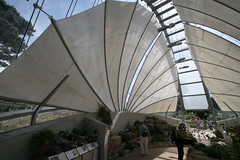I'm now in the final phases of preparing for my first visits at the end of September and the beginning of October (see the calendar). I just sent an email to my contacts at the first three institutions. Below is the body of the majority of that email. It addresses:
- What I'm trying to learn
- The survey I've prepared - anyone reading this with the responsibility of Teaching AE Design is welcome to complete it and comment.
- Who I'd like to meet with
- Asking permission to contact faculty in advance of the visit.
*****************************
What I'm trying to learn
Since I last wrote I've worked hard at refining the issues I'm trying to address. In order to do that I put together a survey/questionnaire that appears quite long, but can be completed fairly rapidly if one just checks boxes, though I hope that people will be inspired to give comments since I'll probably learn the most interesting things from them.
The Survey
I've enclosed a copy of that form with this email. The online version of the survey is available at: http://tinyurl.com/5vr2gt o I'd appreciate any suggestions for clarification or improvements to the survey that you choose to make.
o If you can make the time, filling it out yourself would be much appreciated, either in paper or online form.
o I'd note that if you fill it out with Adobe Reader you currently cannot save the PDF version of the form with your filled-in answers - I'm trying to figure out how to make that possible, but haven't yet succeeded.
FYI, I've gone through the Human Subjects review process with our Institutional Review Board at Drexel to ensure that the process I'm using and the data safeguards I plan meet their standards.
My plan is to use that survey as the basis of discussions with faculty, either individually or in groups, recording the interviews if the faculty give permission. If a faculty member has filled out the form in advance then the interview can either be shorter or go into specific areas in greater depth - as they see fit.
Who I'd Like to Meet With
I've looked through the material available on your website to try and identify people who might be appropriate for me to interview. Below I've given either the names or other identifying characteristics. Again I recognize the limits of busy schedules and faculty interests. I'll need all the help you can give me.
People With Specific Responsibilities
o Faculty who seem to have interests in this area:
- People I’ve identified are:
o Anyone teaching a course identified as relating to Architectural Engineering Design
- People I’ve identified are:
o Anyone teaching an introductory course that gives an overview of Architectural Engineering.
o Individuals advising students about curriculum choices
Contacting Faculty
I'd like to contact the relevant faculty by email in advance of my visit, telling them what it's about and inviting them to complete the online survey in advance. I won't do so unless you explicitly say it's OK. If you can provide me a list with email address that would be great, but I can probably dig out the information from your website if all you want to do is say "OK".

